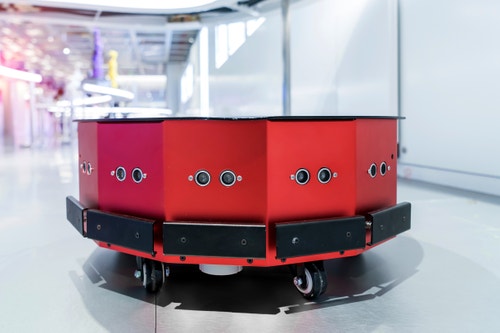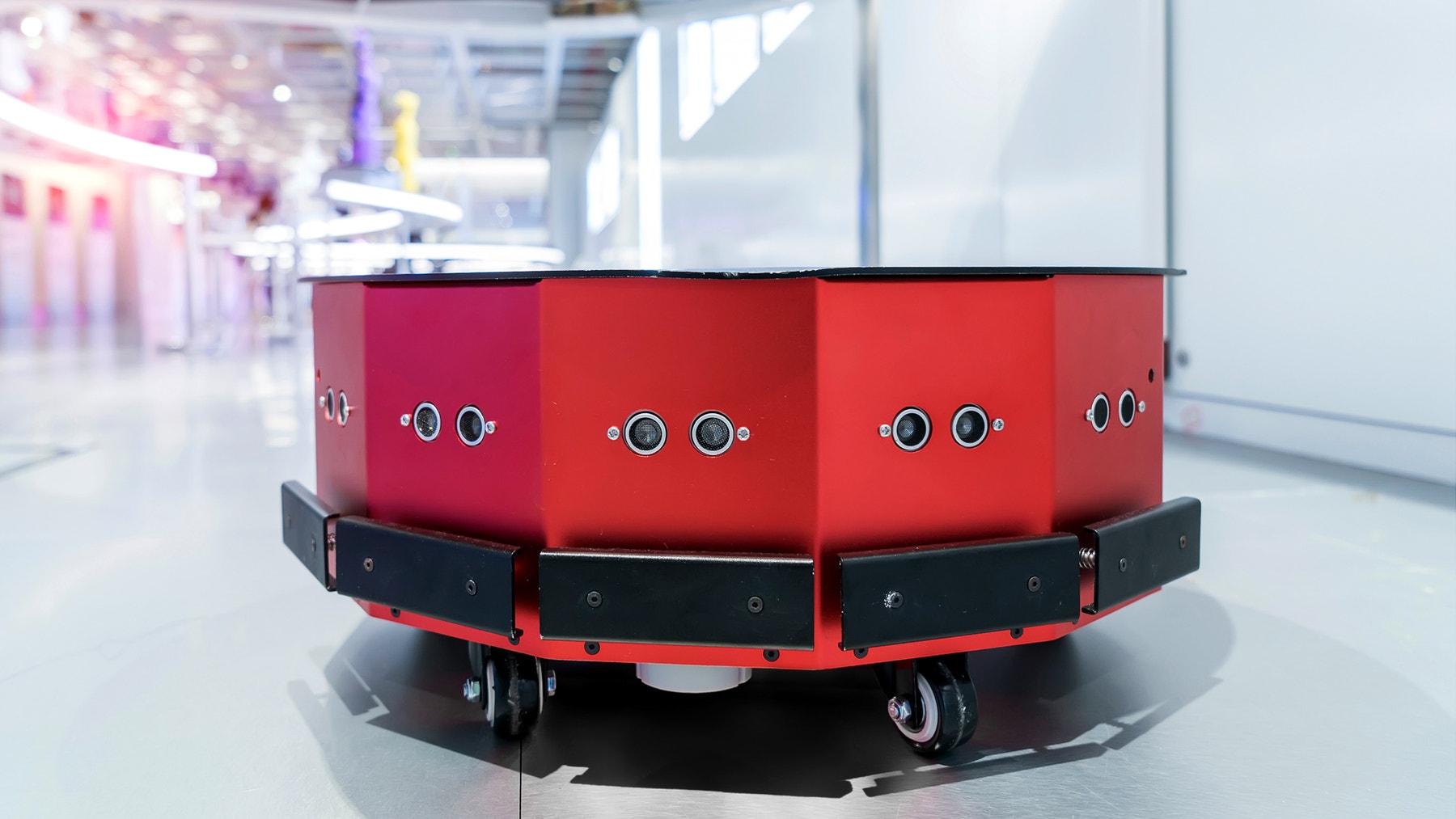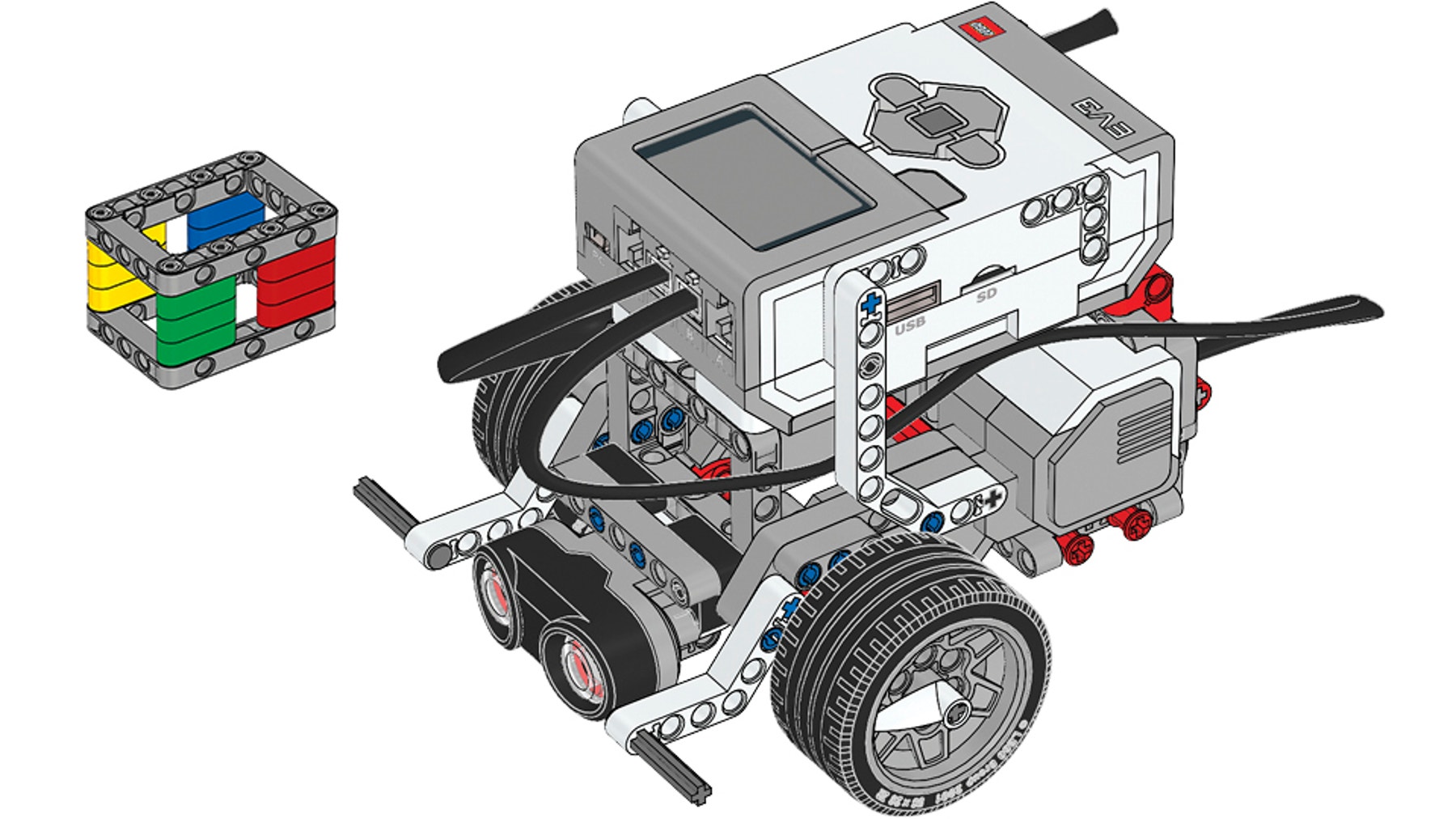Objects and Obstacles
Use the Ultrasonic Sensor to detect the Cuboid and react to it.

Lesson Plan
1. Prepare
- Read through the student material in the EV3 Classroom App.
- Collect some information about how the Ultrasonic Sensor works.
- You’ll need a measuring tape to measure out where to place the Cuboid in this lesson.
- To complete this lesson, the students will have to have built the Driving Base model, which will take about 30 minutes.
2. Engage (5 Min.)
- Use the ideas in the Ignite a Discussion section below to engage your students in a discussion related to this lesson.
- Split your class into pairs.
3. Explore (20 Min.)
- Have each pair of students build the Cuboid, and the Ultrasonic Sensor extension for their Driving Base.
- Give the students some time to use the programming stacks provided to explore how the Ultrasonic Sensor can be used.
4. Explain (5 Min.)
- Facilitate a discussion about how the Ultrasonic Sensor can be used to measure distance.
5. Elaborate (15 Min.)
- Challenge your students to program their Driving Bases to beep faster or louder as it gets closer to the Cuboid.
- Don’t forget to leave some time for cleanup.
6. Evaluate
- Give feedback on each student’s performance.
- You can use the assessment rubrics provided to simplify the process.
Ignite a Discussion
Modular robots are useful because they can be extended and reconfigured to perform a wide range of tasks. Adding sensors enables them to react to their environment so that they can do things like detect obstacles and avoid collisions.

Use these questions to engage your students in a discussion about robots that can detect objects:
- Do you know of any robots that can detect objects?
- Why is it useful for robots to be able to detect objects?
- What’s ultrasound, and how does an Ultrasonic Sensor work?
Building Tips

Building Instructions
Keep the Driving Base assembled after use, rather than taking it apart.
Coding Tips
Main Program

Possible Solution

Differentiation
Simplify this lesson by:
- Spending extra time explaining how to use the Ultrasonic Sensor
Take this lesson to the next level by:
- Challenging your students to program an autonomous robot that avoids obstacles
- Having your students change the Ultrasonic Sensor to a Touch Sensor for detecting obstacles
Assessment Opportunities
Teacher Observation Checklist
Create a scale that matches your needs, for example:
- Partially accomplished
- Fully accomplished
- Overachieved
Use the following success criteria to evaluate your students’ progress:
- Students can use the Ultrasonic Sensor to detect an object.
- Students can change the parameters of the Ultrasonic Sensor Blocks to detect different distances.
- Students can expand their program to react dynamically to the detected distance.
Self-Assessment
Have each student choose the level that they feel best represents their performance.
- Bronze: I’ve used the Ultrasonic Sensor to stop at an object.
- Silver: I’ve used the Ultrasonic Sensor to detect the distance to an object.
- Gold: I’ve made one aspect of the program react dynamically to the distance to an object.
- Platinum: I’ve made several aspects of the program react dynamically to the distance to an object.

Language Arts Extension
To integrate language arts skills development:
- Have your students prepare and deliver a presentation about how Ultrasonic Sensors work.
Note: This will make for a longer lesson.
Career Links
Students who enjoyed this lesson might be interested in exploring these career pathways:
- Manufacturing and Engineering (Machine Technology)
- Manufacturing and Engineering (Pre-Engineering)
Wsparcie dla nauczyciela
Students will:
- Use the Ultrasonic Sensor to detect an object and respond to it
LEGO® MINDSTORMS® Education EV3 Core Set
EV3 Classroom App
A measuring tape
NGSS
MS-ETS1-4
Develop a model to generate data for iterative testing and modification of a proposed object, tool, or process such that an optimal design can be achieved.
CSTA
2-AP-12 6-8
Design and iteratively develop programs that combine control structures, including nested loops and compound conditionals.
Common Core
CCSS.ELA-LITERACY.W.6.2
Write informative/explanatory texts to examine a topic and convey ideas, concepts, and information through the selection, organization, and analysis of relevant content.
CCSS.MATH.CONTENT.6.NS.C.7
Understand ordering and absolute value of rational numbers.
CCSS.MATH.CONTENT.6.NS.C.7.A
Interpret statements of inequality as statements about the relative position of two numbers on a number line diagram. For example, interpret -3 > -7 as a statement that -3 is located to the right of -7 on a number line oriented from left to right.
Materiały dla uczniów
Arkusz dla ucznia
Download, view or share the student worksheet, either as an online HTML page or a printable PDF